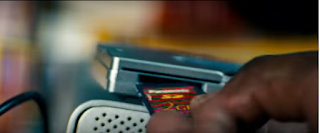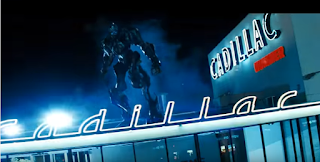I am going to analyse the different types of editing techniques that have been used in this clip from the original Transformers film.
The history of editing: Over the years editing has changed a whole lot, when editing first came around in the very late 1800's, everything was done by hand. People would use scissors to cut the film and then use sticky tape to put the feel reels back together. This is how all films were edited back then. Progressively through the years editing has become more advanced thanks to technology, and now in year 2017, editing is done on computers digitally. Up until 2002 when Star Wars: Attack of the Clones was released, all films were filmed using the the term 'film'. This means that all the footage is captured on film reels and are sent to special rooms to get processed. Star Wars: Attack of the Clones was the first film to be filmed digitally using a digital camera. From then on the way films were filmed had changed, some people still film their films using film, and others do it digitally. The debate on which is better, Digital film making vs Film, is still going on today.
Establishing shot:
This is the establishing shot that is shown at 0:35 seconds into the video clip, this is the moment the girl turns up to the guys house. In order to set a new scene there needs to be a new establishing shot, as shown here.
180 degree rule & shot-reverse-shot: At 0:40 into the clip we see the two characters having a conversation. We see that the camera stays on the opposite side of the door which is called the '180 degree rule', if this rule is broken then it can leave the viewer confused as it makes the characters look as if they have switched places. In these photos are the perfect examples of what is known as a 'shot-reverse-shot'. A shot-reverse-shot is when two people are talking and the camera swaps between person to person filming above their shoulder which gives the audience the impression that the characters are looking at each other.
Eye line match: In this clip is one part in which an eye line match can be seen, this happens at 1:32. An eye line match is when the camera films someone looking directly where the action is about to happen and then cuts to them actually performing this action, which keeps the flow of scene, as shown here. The character played by Anthony Anderson looks at the port in which the SD card slots in to and then the camera cuts to him inserting the card into the slot.
Close ups: Close ups are an important thing in films and editing and in this scene there are a few close ups, all of which being close ups on the SD card that is shown throughout the clip. Having this many close ups on one person or object usually means and signifies that that object or person is important, and in this clip, the SD card is very important. The close ups happen at 0:20, and 1:33.
Reaction shots: In this clip there is a part at 2:22 where the FBI break into their house because they have the classified SD card. At which point Anthony Anderson and his brother create to the break in and their faces are both captured as reaction shots. A reaction shot is when the camera focuses on the characters response to what has happened in a certain situation or to what someone has said.
Parallel editing/cross-cutting: Parallel editing or cross-cutting is when there is two or more scenes in a video or film happening at the same time but in different locations. In this clip from Transformers there is a part in which parallel editing does occur. The first scene starts at 1:32 and the other scene that is happening at the same time starts at 1:35. Anderson's character is trying to access the stolen SD card that was classified, then it switches to the government being informed that someone has just hacked the card to gain access, this gives a clear indication that those two scenes are happening at relatively the same period of time. Soon after they have been informed FBI were sent to the house to arrest them, because they were sent so soon, this also shows that both scenes were happening at the same time.

This is the moment that the SD card was about to be inserted and hacked.
And this is the moment the the government were informed that the SD had been hacked.
Montage: A montage is a series of clips put together with just music that usually lasts a couple of minutes, the this clip there is no example of a montage, however at the start of the first Transformers film when the Autobots first arrive on earth, there is a short montage showing how they acquire their forms. As seen here, these are a few pictures from the moment the Autobots arrive on earth.
Shot variation: Shot variation is when there are a selection of different shots used in one clip, for example, you could have a scenario in which there needs to be a close-up, a wide angle shot, an extreme close up, and a long shot. All of which would be used in one clip. There is a few seconds in the clip in which there is a close-up, a long shot and a medium shot are all used in a short period of time:
Conclusion: In conclusion, there are a lot of editing techniques used in this clip I have selected, however there were also a few editing techniques there I was not able to either find or spot in the video clip. None of the techniques that were not in the clip chosen I could not also find in any of the films, I checked everywhere but unfortunately was not able to find any of the missing editing technique in any of the transformers films.

















No comments:
Post a Comment